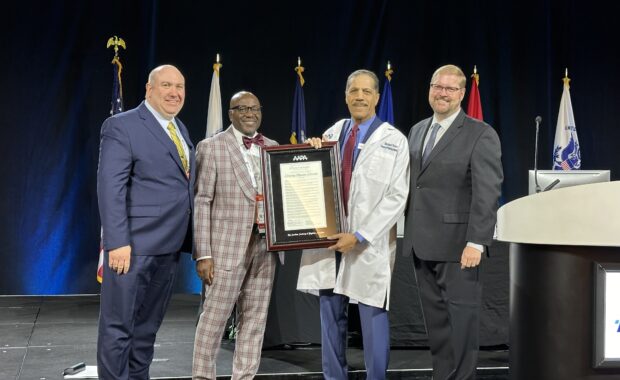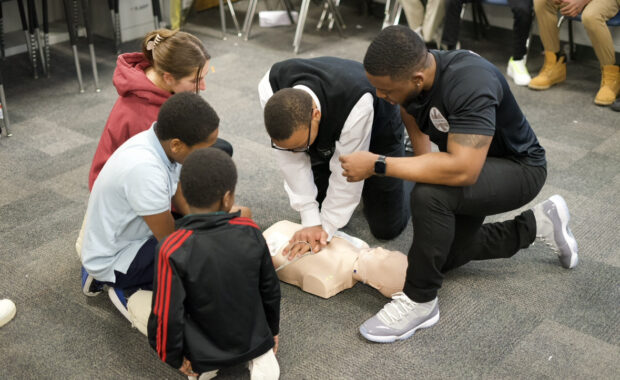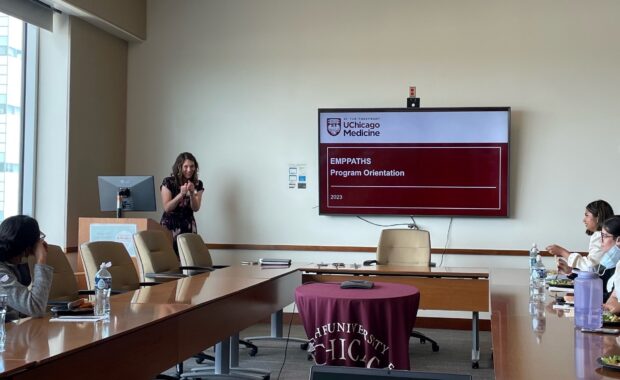Human Trafficking: A Prevalent Yet Invisible Threat
One PA Student’s Experience with Human Trafficking
Editor’s note: The May 2017 Assembly of Representatives passed the following resolution by majority vote: “The Student Academy resolves to promote the education and awareness of PA students regarding the presence of human trafficking.” Director of Student Communications on the Student Academy Board, Emma Reeve, chairs this volunteer group and worked with student volunteers to create content and social media posts to raise awareness about human trafficking. The article below is written by one of the student volunteers. The author will remain anonymous to protect the human trafficking victim.
Human trafficking is a prevalent yet invisible threat to public health. As healthcare professionals, our paths are likely to cross with those of trafficking victims; we are often a victim’s best chance of surviving and identifying associated health problems. It is critical that we be alert to the signs of trafficking. If we are alert, we can involve the proper authorities, identify risk factors, and treat mental or physical illnesses that otherwise might persist undetected for years.
During my clinical rotations as a PA student, I encountered a human trafficking victim who was rescued in a coordinated police operation. We were contacted to evaluate her physical and emotional health before she was sent back to her home country. She had been lured to the United States under the guise of solid work for good pay. At first glance, my general evaluation was a healthy middle-aged woman in no acute distress. With further questioning, however, subtle red flags arose: her affect remained constricted, personal questions made her nervous, and her answers were increasingly brief and often not complete. When asked about her hesitation to share with us, she confessed that she thought she would be allowed to immediately return home if she were truly free, and worried that her delay in returning home was because she was in trouble with the law. She thought we saw her as a criminal, rather than a victim, due to her association with trafficking.
With the assistance of a translator, and over a few days, we were we able to impress upon her that she was no longer in danger. Slowly, she recounted her recruitment, captivity, and then eventual rescue from trafficking. We learned that, upon her arrival to the United States, her cell phone and passport were taken from her. She was held in a hotel room under constant surveillance and forced into prostitution.
Surprisingly, she did not identify herself as a victim. She found any suggestion of physical or mental weakness to be somewhat offensive. The translator had to explain to us the cultural etiology of her reaction to our interview, which further underscored the difficulties one might encounter in identifying and treating trafficking victims most in need.
The only abnormality observed in this patient on physical exam was that of malnourishment – likely from being locked in a hotel room and fed only what was given to her by her captors for months on end. In terms of mental health, she did not endorse PTSD symptoms, anxiety, or depression. Only by talking with others, especially her translator, were we able to learn that this woman was frequently tearful outside of the clinic, and suffering from nightmares and intrusive thoughts about her captivity.
The struggle with identifying trafficking victims is that identification centers on the individual patient’s gender, culture, and adaptation skills. Trafficking victims can have trouble sharing information with healthcare providers due to their home country cultures, extended periods of isolation, and/or their captors’ threats of violence. Some even have such low self-esteem and social support that they believe their captors care for them. There is no universal warning sign to identify human trafficking victims; healthcare providers must be observant of the whole patient, get a full history, and be alert to subtle red flags. If we are observant enough and ask the right questions, we can identify trafficking victims while we still have the power to truly help them.
Trafficking victims are best identified by providers who are aware that these patients exist in their patient population and might present to their office. These providers have trafficking on their radar and its victims in their differential. However, despite my education and knowledge of human trafficking, I must admit I was not screening for it in my patient interview. Even after trafficking seminars and hearing countless statistics concerning the prevalence of trafficking, I had not applied this knowledge to my clinical decision-making.
Clinical rotations enable PA students to solidify their academic knowledge by making essential connections between book learning and real-life situations. PA students gain first-hand experience communicating in a team, collecting thorough patient histories, and linking seemingly disparate pieces of information. The first-hand learning experience is invaluable in enhancing clinical decision-making ability.
During my clinical rotations, my encounter with a trafficking victim connected a second-hand statistic with a first-hand experience. It quickly underlined the importance of remaining sensitive to the possibility of encountering trafficking victims in the healthcare arena, working with a clinical team to get a complete picture of each patient, and caring for each patient as an individual. It was an invaluable PA-student experience, and one which will enhance my ability to identify trafficking victims in the future, as well as provide care as part of a healthcare team.
Additional Resources
Rosh Review’s Quiz for a Cause — a free question bank designed with one goal: to ensure you have the knowledge you need to save the lives of victims of human trafficking.
Human Trafficking: Become Informed and Be Attentive
Thank you for reading AAPA’s News Central
You have 2 articles left this month. Create a free account to read more stories, or become a member for more access to exclusive benefits! Already have an account? Log in.



